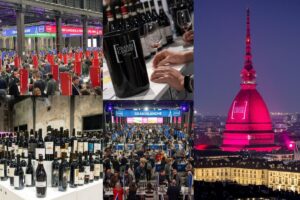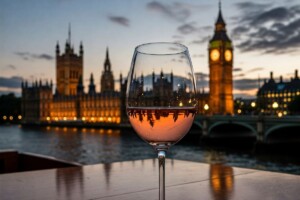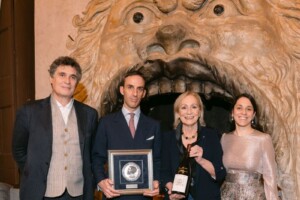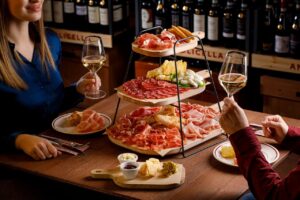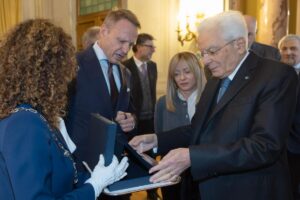Not only the British and the Florios with Marsala, but the French also played an important role in the nineteenth century for the development of viticulture in Sicily. A page of forgotten history, which may now be carried out by the Friulian, President of Palermo Soccer and entrepreneur Maurizio Zamparini, who owns other wine properties in Italy.
The wine of Zucco was "invented" by the son of the King of France, Enrico d'Orleans, Duke of Aumale son of King Louis Philippe and Marie Amelie of Bourbon, and until a few years ago not much more than a myth, a lost wine, linked to memories of a happy and prosperous age, of which older farmers in Montelepre still tell stories.
Zucco was an immense estate of six thousand hectares in the province of Palermo; in the hinterland of Terrasini and the closest towns were Montelepre and Giardinello. It was purchased by the Duke of Aumale in 1853, the heirs of the Princes of Partanna, and was mainly cultivated with olive trees, vineyards, sumac, citrus and carob, but most of the land was left to barren pasture. To understand Henri d'Aumale’s personality, we must remember that his mother owned the Palazzo d'Orleans, which is today the residence of the President of the Sicilian Region, and that he was one of the richest and learned men of his time. The Duke loved his Sicilian feud, so much so that he wanted to return to die there in 1897. His main residence was in France at the Chateau de Chantilly, but Henri loved to travel once a year to Zucco. When he died without direct heirs because his sons died before him, the Zucco property was broken up and sold. A large part went to the Princes of Gangi who continued to produce a little bit of sweet wine, Muscat of Zucco, whereas Duke of Aumale produced dry wines. The feud, divided and abandoned, quickly fell into ruin and its story became a legend, though somewhat confused.
Lidia Rizzo, from Catania, a student of documentary films under the guidance of Folco Quilici came across this story and painstakingly collected documents, which were kept mainly in the Chateau de Chantilly and oral stories to make a documentary film. The film was released first in Venice and then on September 21st at the Aumale Palace in Terrasini, opposite the Praiola beach, today a regional Museum, which was used by Duke Henri as a warehouse to store the wine produced at Zucco, before being sent to France where it was highly appreciated.
The Duke of Aumale brought French workers to Zucco, introduced vineyard management techniques and wineries from the other side of the Alps.
The Duke aged his wines up to five years (to be exact, the term used was "educating"), had an irrigation system built, and brought varieties such as Riesling, semillon, grenache blanc , white alicante to Zucco. But he had also learned to recognize the quality of the native grapes so his white wine was 50% catarratto, and part inzolia, and he used perricone for his red, demonstrating that the wine produced was elegant and not at all rough. He was also among the first to bottle and in order to avoid counterfeiting he also invented translucent labels, which were difficult to imitate. Since his wine was "pure", naturally high in alcohol content, 17 degrees, and produced in the best hygienic conditions, it was not necessary to fortify it with alcohol for its sea voyage, as the British did with Marsala, and it was not falsified as many maderas were in that period.
Lidia Rizzo discovered all these facts. In her documentary, Pietro Galioto, who has inherited a part of the old Zucco estate and produces organic citrus fruits there, speaks about his projects. Pietro dreams of reviving the Duke’s wine to its former glory in a territory that from the point of view of soil and climate is ideal for quality viticulture, with those loose soils that are formed by the degradation of the mountains, so rich in minerals, and the cool breeze blowing from the sea every day. And Pietro also tells us about Maurizio Zamparini's interest for Zucco. "My President wants to build a sports center with football fields”, says Pietro, “and produce organic grapes and wine together with me. These activities will be underway within a year’s time”.
In the upcoming months the project will be defined, and it should cover a total of about twenty acres. For now, Pietro Galioto has focused on white Muscat, rather than on the Duke’s dry wines, to produce that sweet Zucco Muscat, actually produced later by the Gangi Princes. In the last few years also IRVOS (Institute of Vines and Wines of the Sicily Region) has been studying and supporting the creation of a specification and a brand, expanding the production area to Partinico on one side and Balestrate on the other. Cusumano already produces Zucco Muscat and the Cossentino and Tola wineries are also working on producing it.
"The goal of the experiment and the brand, ensures Dario Cartabellotta, manager of IRVOS, “is to enhance the territorial identity of Zucco that we are rediscovering”.
Alma Torretta
Copyright © 2000/2025
Contatti: info@winenews.it
Seguici anche su Twitter: @WineNewsIt
Seguici anche su Facebook: @winenewsit
Questo articolo è tratto dall'archivio di WineNews - Tutti i diritti riservati - Copyright © 2000/2025











